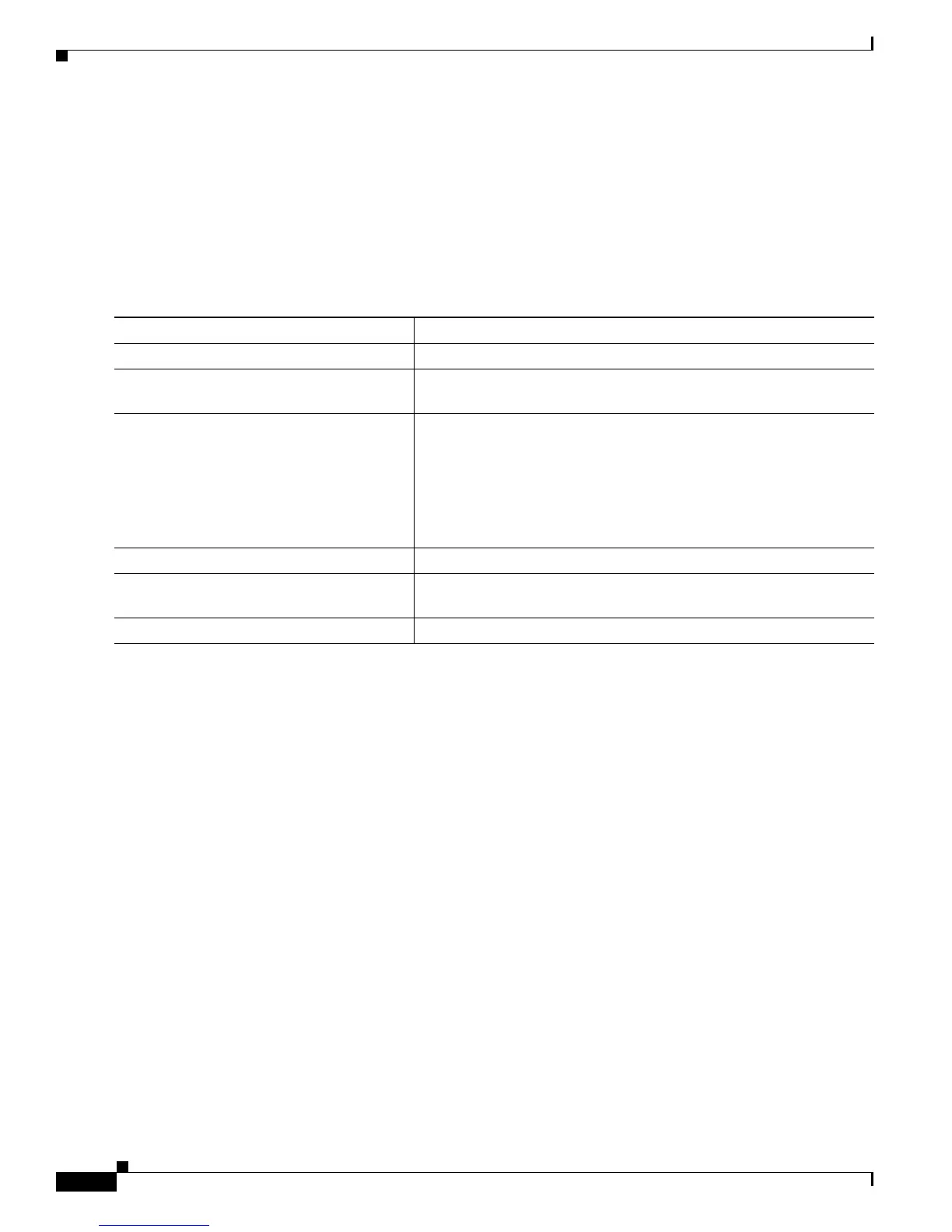35-52
Cisco ME 3400 Ethernet Access Switch Software Configuration Guide
OL-9639-07
Chapter 35 Configuring IP Unicast Routing
Configuring BGP
Configuring BGP Filtering with Route Maps
Within BGP, you can use route maps to control and to modify routing information and to define the
conditions by which routes are redistributed between routing domains. See the
“Using Route Maps to
Redistribute Routing Information” section on page 35-99 for more information about route maps. Each
route map has a name that identifies the route map (map tag) and an optional sequence number.
Beginning in privileged EXEC mode, follow these steps to use a route map to disable next-hop
processing:
Use the no route-map map-tag command to delete the route map. Use the no set ip next-hop ip-address
command to re-enable next-hop processing.
Configuring BGP Filtering by Neighbor
You can filter BGP advertisements by using AS-path filters, such as the as-path access-list global
configuration command and the neighbor filter-list router configuration command. You can also use
access lists with the neighbor distribute-list router configuration command. Distribute-list filters are
applied to network numbers. See the
“Controlling Advertising and Processing in Routing Updates”
section on page 35-107 for information about the distribute-list command.
You can use route maps on a per-neighbor basis to filter updates and to modify various attributes. A route
map can be applied to either inbound or outbound updates. Only the routes that pass the route map are
sent or accepted in updates. On both inbound and outbound updates, matching is supported based on AS
path, community, and network numbers. Autonomous-system path matching requires the match as-path
access-list route-map command, community-based matching requires the match community-list
route-map command, and network-based matching requires the ip access-list global configuration
command.
Command Purpose
Step 1
configure terminal Enter global configuration mode.
Step 2
route-map map-tag [[permit | deny] |
sequence-number]]
Create a route map, and enter route-map configuration mode.
Step 3
set ip next-hop ip-address [...ip-address]
[peer-address]
(Optional) Set a route map to disable next-hop processing
• In an inbound route map, set the next hop of matching routes to
be the neighbor peering address, overriding third-party next hops.
• In an outbound route map of a BGP peer, set the next hop to the
peering address of the local router, disabling the next-hop
calculation.
Step 4
end Return to privileged EXEC mode.
Step 5
show route-map [map-name] Display all route maps configured or only the one specified to verify
configuration.
Step 6
copy running-config startup-config (Optional) Save your entries in the configuration file.

